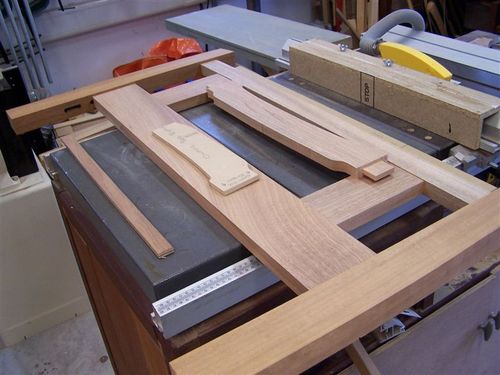Hi Nikki
Perhaps I should have been more constructive and offered you some safer alternatives. Here's seven safer alternatives to be going on with:
Method 1 - Mark out with pencil and hand plane using a jack or fore plane. Skew the plane to deal with the crossgrain at the panel top/bottom
Method 2 - As above but a lot faster- use a power planer to rough out then take a final cut with a hand plane or sand off to remove the scallops
Method 3 - Heavy (1/2in - 2HP+) router inverted in a router table with a
panel raising router cutter. Make sure there's a safety guard above the cutter (piece of acrylic or polycarbonate. Because the cut is on the underside and the top of the cutter is covered this is pretty safe.
Method 4 - For smaller routers use a
horizontal router table with a
horizontal router raising cutter. Needs a much smaller router. I'd still recommend adding a guard, though.
Method 5 - As method 4, but angle the router base plate on a wedge and use a long (2in) straight cutter to emulate the shape you'd get using a panel raising cutter. Cheaper still.
Method 6 - Also for smaller routers. Make up an L-section support piece and clamp it, together with your panel in your workbench vice. Machine using your router fence as
here at the bottom of the page
Method 7 - Use a spindle moulder with a
panel raising cutter (look at page 11). Probably too expensive for most, but commonly used in the commercial world and included for completeness
There are other methods, but all of them involve exposed cutters and/or kickback risk to some extent. None of the above methods require any major amount of clean-up (or any at all for the router/spindle methods).
Think smarter - work safer
Scrit

































